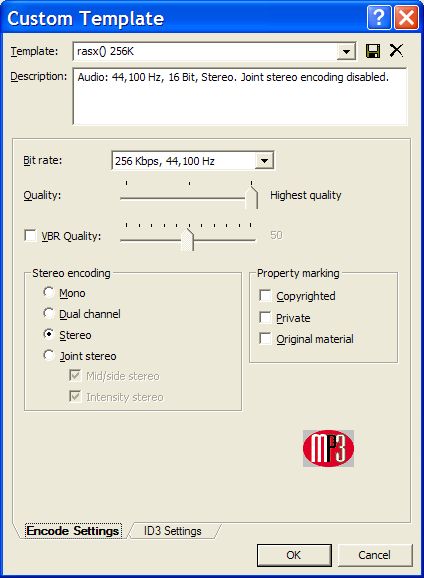Cutting MP3 Tracks, Part 2: Joint Stereo
 My most favorite track for 2006 is from Issa Bagayogo of Mali. The track is spelled Madomba in these Late Latin glyphs. Listen and you have a relaxed male principle and an equally relaxed female principle making soothing human voices from a place of calm and meditation—deep within an orderly arrangement. The rhythm is so soothing and efficient (or “tight” when you gots to have ’90s street slang).
My most favorite track for 2006 is from Issa Bagayogo of Mali. The track is spelled Madomba in these Late Latin glyphs. Listen and you have a relaxed male principle and an equally relaxed female principle making soothing human voices from a place of calm and meditation—deep within an orderly arrangement. The rhythm is so soothing and efficient (or “tight” when you gots to have ’90s street slang).
The first time this was ripped into MP3 format, some of this efficiency was lost when the high-frequency percussion came out ‘blurred.’ I could not hear those Malian metal threads scraping against each other high above the bass drums. I did not understand what was going on until the words “joint stereo” introduced me to the world of joint frequency encoding. This Sony SoundForge screenshot summarizes:

Storage space is not an issue for me (and most of us who burn optical media) so there is no point to enable it. There are other voices out there that defend joint stereo against the myths. This reminds me of those who are confident what the human can and cannot hear. Note that the words ‘what the human ear can hear’ were not written in the previous sentence—this is supposed to fend off sophomoric discussions based on simplifying assumptions. But then again I could be blaming joint stereo when perhaps the Quality setting (pictured above) was set too low in previous encoding sessions. Perhaps… but read this from winhlp.com:
This works very well and produces excellent quality at 128 Kbit/s for most pieces of music. The Fraunhofer codecs, for example, use this method.
However, there is one drawback. Some music contains sounds that are deliberately delayed or phase shifted. Such effect boxes are called “flanger”, “phaser” and the like. If you encode such music in joint stereo, you will have bad cancelling effects where the high tones appear and disappear all the time, destroying the good original sound. One old example is the accompanying guitar in Paul Simon’s “Mrs. Robinson”.
